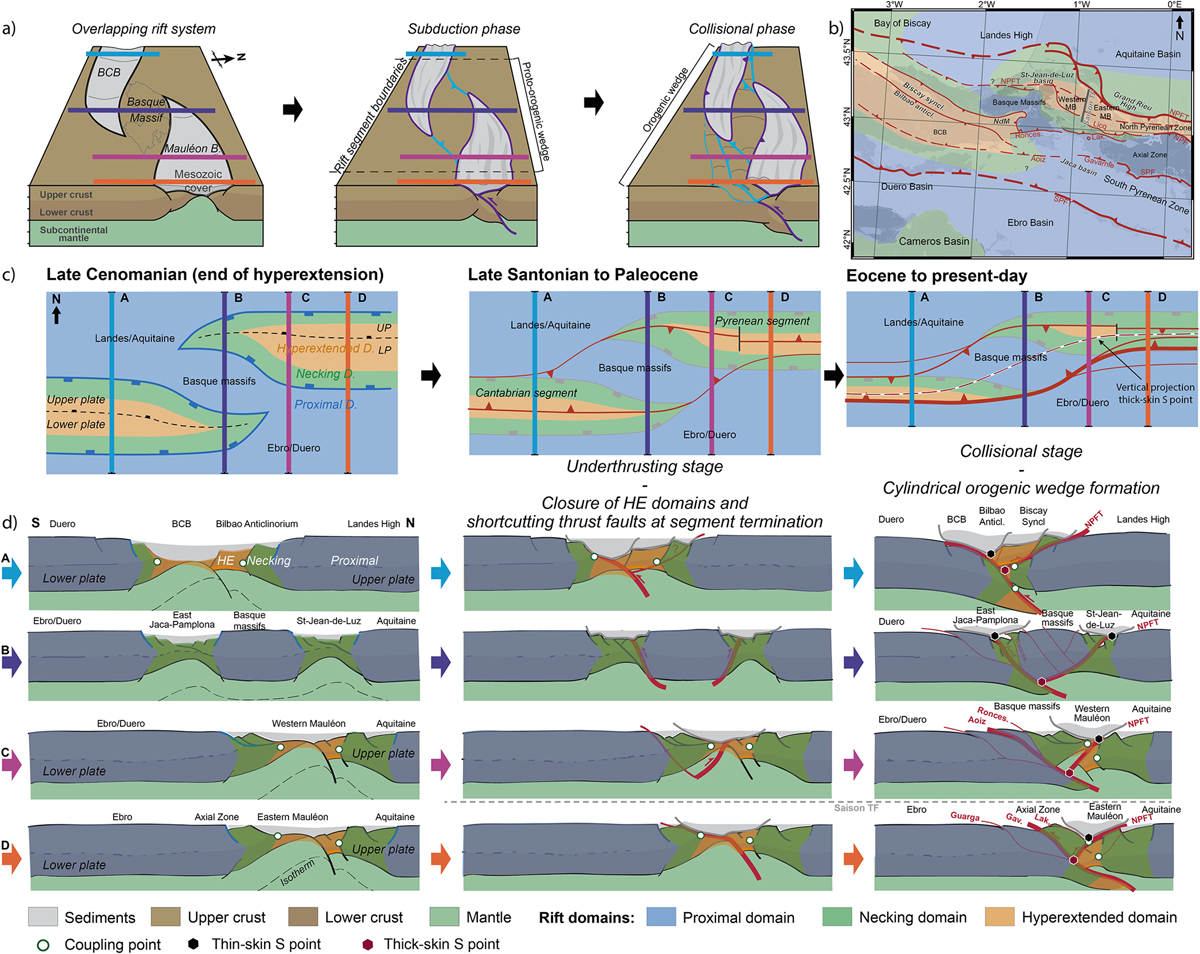Fig. 11

Download original image
Reactivation of overlapping en-echelon rift segments based on the example of the Pyrenean-Cantabrian junction showing the importance of shortcutting structures and their role in preserving rift structures (modified from Lescoutre and Manatschal, 2020). (a) Schematic 3D evolution of the Pyrenean-Cantabrian junction highlighting the structural evolution during the subduction (Late Santonian-Paleocene) and collisional (Eocene-Miocene) phases. (b) Rift domains map of the Pyrenean-Cantabrian junction. (c) Schematic kinematic restoration of the rift domains map (panel b) at Late Cenomanian (end of hyperextension), Late Santonian to Paleocene (early convergence), and Eocene to present-day (late and post convergence) stages. The locations of the cross-sections shown in panel d are represented. (d) Cross sections across the Pyrenean-Cantabrian junction (see panel c for location) showing the evolution for the Late Cenomanian (end of hyperextension), the Late Santonian to Paleocene stage (early convergence), and the Eocene to present-day (late- and post-convergence) stages. Abbreviations used in the Figures: BCB: Basque-Cantabrian Basin; MB: Mauléon Basin; SPF: South Pyrenean Fault; NdM: Nappe des Marbres; Lak: Lakoura thrust; Gav: Gavarnie thrust; Ronces: Roncesvalles thrust; NPFT: North Pyrenean Frontal Thrust; NPF: Northern Pyrenean Fault.
Current usage metrics show cumulative count of Article Views (full-text article views including HTML views, PDF and ePub downloads, according to the available data) and Abstracts Views on Vision4Press platform.
Data correspond to usage on the plateform after 2015. The current usage metrics is available 48-96 hours after online publication and is updated daily on week days.
Initial download of the metrics may take a while.




